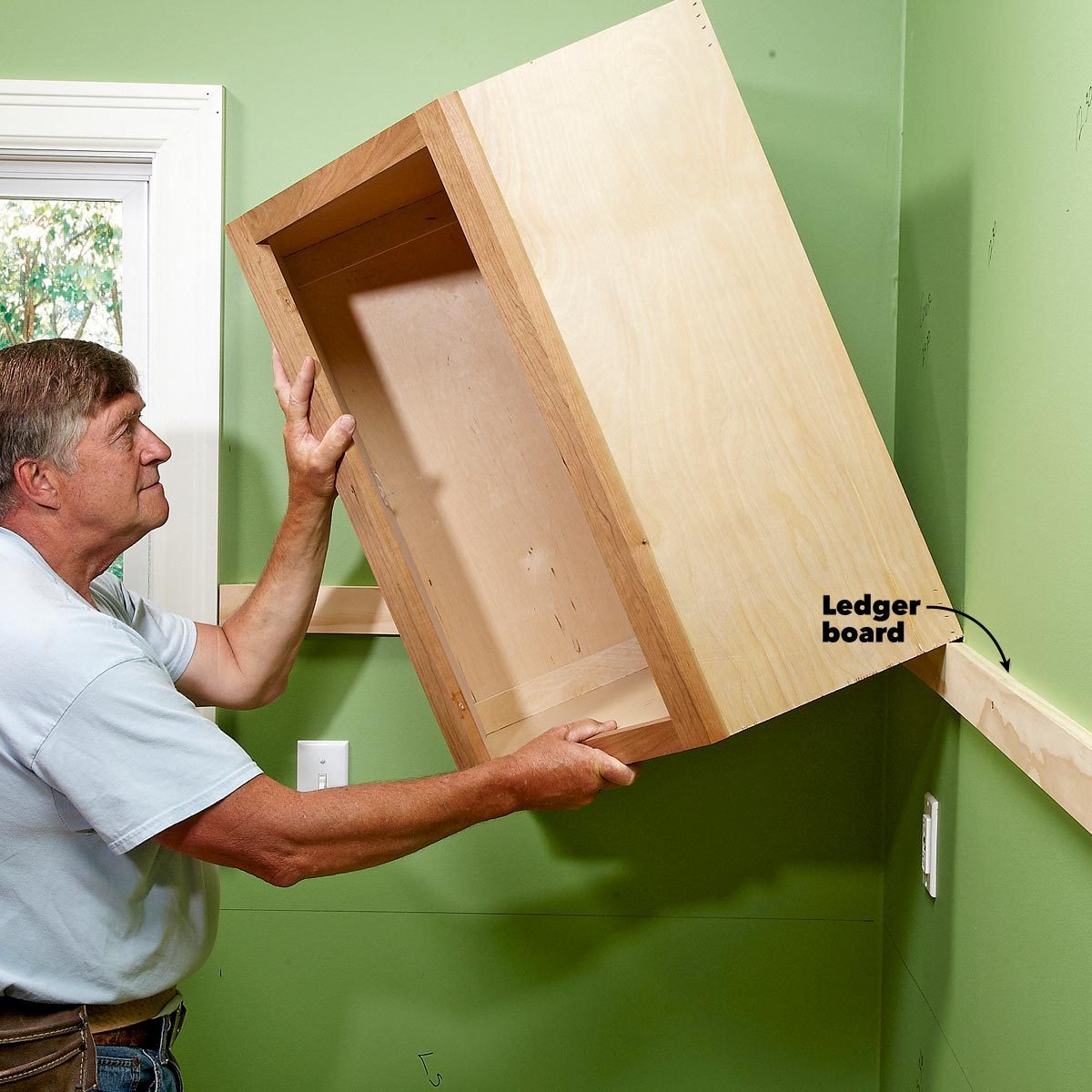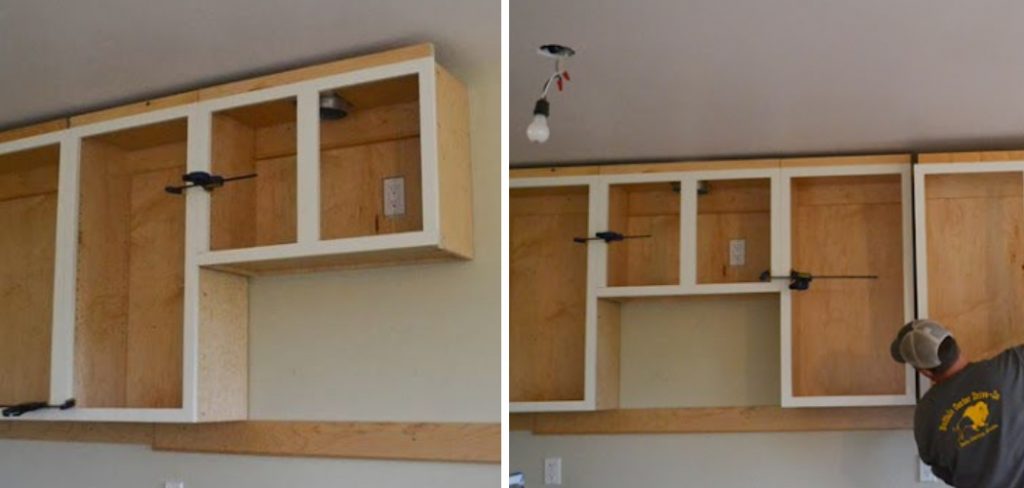Understanding the Basics: How To Install Wall Cabinets Without Studs

Installing wall cabinets without studs requires careful planning and execution. This approach allows for flexibility in cabinet placement and can be particularly useful in older homes or when dealing with unconventional wall layouts. This section will delve into the key aspects of this process, covering different cabinet types, essential tools, materials, and safety considerations.
Cabinet Types and Suitability
The type of wall cabinet you choose significantly impacts the installation process. Some cabinets are better suited for studless installations than others.
- Floating Shelves: These shelves are designed to be mounted directly to the wall using brackets and are ideal for studless installations. They offer a minimalist aesthetic and can be easily adjusted.
- Wall-Mounted Cabinets: These cabinets are typically lighter and often come with pre-installed mounting brackets. They can be installed using specialized anchors that provide strong support in studless walls.
- Base Cabinets: While base cabinets are generally intended for floor installation, some models can be adapted for wall mounting using sturdy brackets and strong anchors. This option provides more storage space but requires careful planning and consideration of weight distribution.
Tools and Materials
The tools and materials you need for a successful studless cabinet installation will vary depending on the type of cabinet and the wall material. However, some essential items are common to most projects.
- Stud Finder: While this may seem counterintuitive, a stud finder can help locate potential obstructions within the wall and determine the best anchor placement.
- Level: Ensuring cabinets are level is crucial for both aesthetics and functionality. A level will help you achieve accurate placement.
- Drill: A cordless drill with various drill bits is essential for drilling pilot holes and installing anchors.
- Tape Measure: Accurate measurements are vital for proper cabinet placement and anchor positioning.
- Pencil: Use a pencil to mark the desired locations for mounting holes and anchors.
- Safety Glasses: Always wear safety glasses when working with power tools to protect your eyes from debris.
- Heavy-Duty Anchors: These anchors are designed to provide strong support in studless walls. They come in various sizes and materials, so choose the appropriate ones based on the weight of the cabinet and the wall material.
- Screws: Use screws that are long enough to securely attach the cabinet to the anchors.
Safety Precautions and Best Practices
Safety is paramount when working with power tools and heavy objects. Here are some essential precautions to keep in mind:
- Always wear safety glasses to protect your eyes from flying debris.
- Use a stud finder to locate potential obstructions in the wall before drilling.
- Avoid drilling into electrical wires or plumbing lines. If you’re unsure, consult a qualified electrician or plumber.
- Always follow the manufacturer’s instructions for using power tools and installing anchors.
- Never attempt to install a cabinet that is too heavy for you to lift safely. Enlist help if necessary.
- Use a ladder or step stool when working at heights, ensuring it is stable and positioned correctly.
- Keep the work area clean and free of clutter to prevent tripping hazards.
Methods for Installing Wall Cabinets Without Studs

Installing wall cabinets without studs can be a challenge, but with the right tools and techniques, it’s definitely achievable. There are several methods available, each with its own advantages and drawbacks. Let’s explore some of the most common options.
Using Toggle Bolts
Toggle bolts are a popular choice for securing heavy objects to drywall without studs. They consist of a bolt with a wing nut and a spring-loaded toggle that expands behind the drywall. Here’s how to install them:
1. Drill a pilot hole: Use a drill bit that is slightly smaller than the diameter of the toggle bolt.
2. Insert the toggle: Feed the toggle through the hole in the wall.
3. Tighten the bolt: As you tighten the bolt, the toggle expands behind the drywall, creating a secure anchor.
Advantages:
* Toggle bolts are relatively inexpensive and easy to install.
* They provide a strong hold in drywall.
Drawbacks:
* Toggle bolts can be difficult to install in tight spaces.
* They may not be suitable for all applications, especially those requiring very heavy loads.
Using Specialized Wall Anchors
There are a wide variety of specialized wall anchors available, each designed for specific applications and load capacities. Some common types include:
* Plastic anchors: These are inexpensive and easy to install, but they may not be suitable for heavy loads.
* Metal anchors: These are stronger than plastic anchors and can handle heavier loads.
* Drywall anchors: These are designed specifically for use in drywall and offer a secure hold.
Advantages:
* Specialized wall anchors provide a wide range of options for different load capacities and wall materials.
* They can be more secure than toggle bolts in certain applications.
Drawbacks:
* Specialized wall anchors can be more expensive than toggle bolts.
* They may require specialized tools for installation.
Comparing Mounting Methods
When choosing a mounting method, it’s important to consider the weight of the cabinets, the type of wall material, and the desired level of security.
- Using a stud finder: This is the most secure method, but it’s only possible if there are studs in the desired location. If you’re lucky enough to have a stud, you can use screws or lag bolts to secure the cabinets directly to the stud.
- Creating a support frame: This involves building a frame out of wood or metal that can be attached to the wall using multiple mounting points. This method distributes the weight of the cabinets more evenly and can provide a very secure hold.
- Combining techniques: You can also combine different mounting methods to achieve maximum security. For example, you could use toggle bolts to secure the upper cabinets and specialized wall anchors for the lower cabinets.
Detailed Installation Guide

Now that you understand the basics and various methods for installing wall cabinets without studs, let’s delve into a step-by-step guide for a successful installation.
Marking the Wall for Cabinet Placement
The first step involves accurately marking the wall for the placement of your cabinets. This ensures proper alignment and symmetry, resulting in a visually appealing installation.
- Determine the desired height for your cabinets. Consider factors like countertop height and personal preference.
- Use a level to mark a horizontal line on the wall where the bottom of the cabinet will be placed.
- Measure the width of the cabinet and mark the wall accordingly, ensuring the cabinet is centered.
- Repeat the process for each cabinet you plan to install.
Drilling Pilot Holes and Installing Mounting Hardware
Once you’ve marked the wall, you need to drill pilot holes and install mounting hardware to secure the cabinets. This step ensures that the hardware is installed securely and that the cabinets are held in place.
- Use a drill bit slightly smaller than the diameter of the mounting screws.
- Drill pilot holes at the marked locations on the wall.
- Insert the mounting hardware into the pilot holes. For heavy cabinets, consider using heavy-duty anchors.
| Step | Description | Illustration |
|---|---|---|
| 1 | Mark the wall for cabinet placement using a level and measuring tape. | [Image of a person marking the wall with a pencil and level] |
| 2 | Drill pilot holes at the marked locations, ensuring they are deep enough for the mounting hardware. | [Image of a person drilling pilot holes in the wall with a drill] |
| 3 | Insert the mounting hardware into the pilot holes. | [Image of a person inserting mounting hardware into the pilot holes] |
Leveling and Securing the Cabinet to the Wall
With the mounting hardware installed, it’s time to level and secure the cabinet to the wall. This ensures that the cabinet is level and stable, preventing it from tilting or falling.
- Position the cabinet on the wall, aligning it with the marked locations.
- Use a level to ensure the cabinet is perfectly horizontal.
- Carefully secure the cabinet to the wall using the mounting screws.
- Tighten the screws firmly, but avoid overtightening, which could damage the cabinet or wall.
Completing the Installation with Finishing Touches, How to install wall cabinets without studs
After securing the cabinet, you can add finishing touches to complete the installation. This step ensures a professional-looking and functional installation.
- Install any necessary hardware, such as cabinet doors, hinges, and drawer slides.
- Apply caulk or sealant around the edges of the cabinet to prevent moisture damage.
- Clean the cabinet and surrounding area to remove any dust or debris.
How to install wall cabinets without studs – Installing wall cabinets without studs requires creative solutions like using specialized anchors or mounting brackets. If you’re aiming for a classic and stylish kitchen, consider white cabinets with a gray island and black countertops , which complement any cabinet installation method.
Regardless of your chosen design, remember to always prioritize safety and stability when installing cabinets without studs.
Installing wall cabinets without studs requires creative solutions, like using heavy-duty toggle bolts or specialized mounting brackets. Once the cabinets are up, you’ll need to secure your countertop. This is where a strong and reliable connection is crucial. For a detailed guide on how to fasten your countertop to the cabinet, check out how to fasten countertop to cabinet.
Once your countertop is secured, your kitchen cabinets will be ready for years of use, even without traditional stud support.